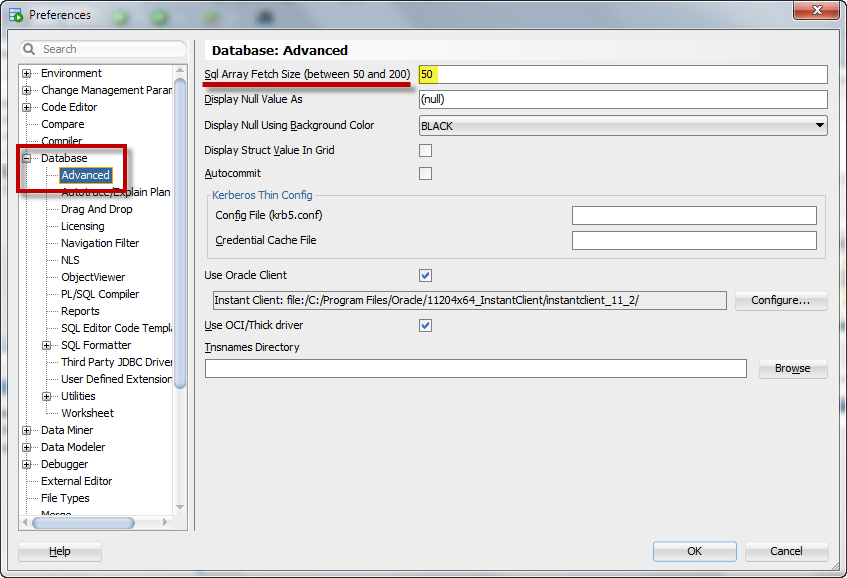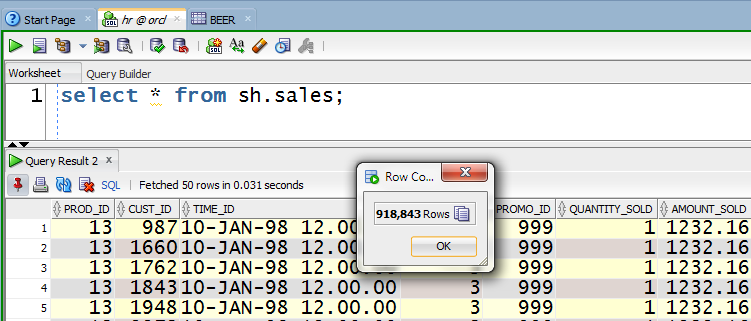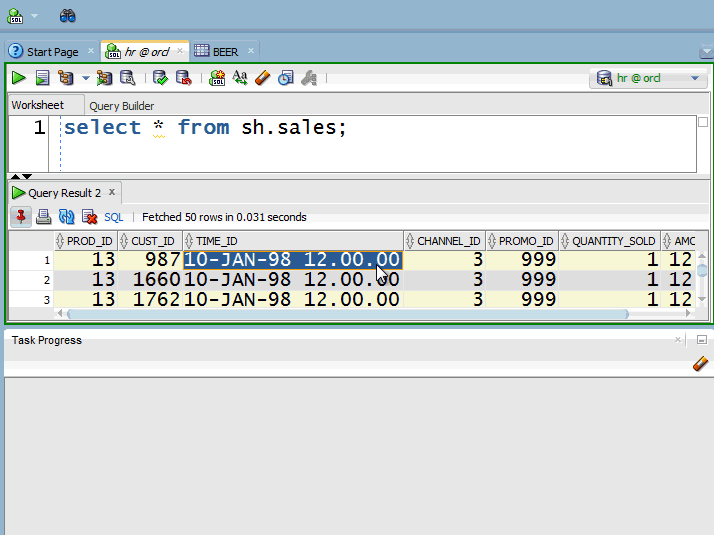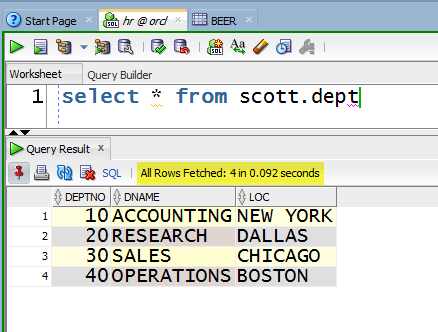Oracle SQL Developer: Fetching SQL Statement Result Sets
Posted
by thatjeffsmith
on Oracle Blogs
See other posts from Oracle Blogs
or by thatjeffsmith
Published on Wed, 28 May 2014 18:54:03 +0000
Indexed on
2014/05/28
21:47 UTC
Read the original article
Hit count: 469
Running queries, browsing tables – you are often faced with many thousands, if not millions, of rows. Most people are happy with looking at the first few rows. But occasionally you need to see more. SQL Developer doesn’t show you all records, all at once. Instead, it brings the records down in ‘chunks,’ or as-needed.
How It Works
There is a preference that tells SQL Developer how many records to get in a single request, or ‘fetch’ of records.
So if I run a query that returns MORE than 50 rows:
We don’t know how many records are in this result set actually. To show the record count here, we actually go physically query the database with a row count type query.
All we know is that the query has finished executing, and that there are rows available to go fetch. It tells us when it’s done.
As you scroll through the grid, if you get to record 50 and scroll more, we’ll get 50 more records.
Or, you can cheat to get to the ‘bottom’ of the result set.
Once all the records have been fetched, you’ll see this:
A word of caution
There’s a reason we have the default set to 50 and not 1000. Bringing back data can get expensive and heavy. We’ve found the best performance to be found in that 50 to 200 record range.
© Oracle Blogs or respective owner



